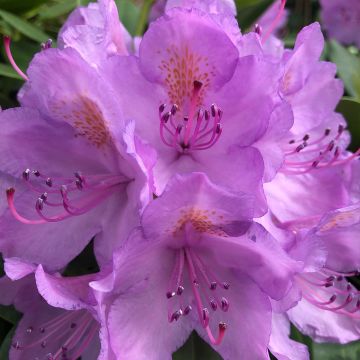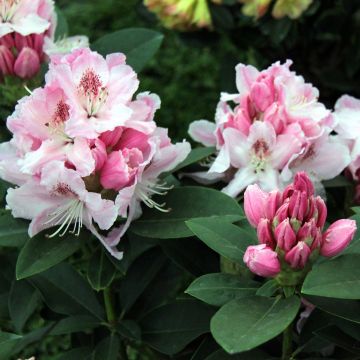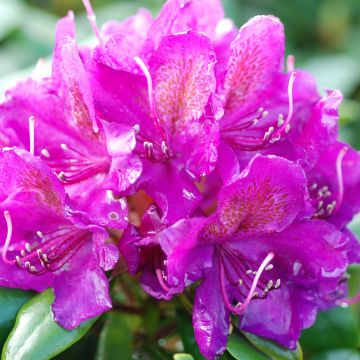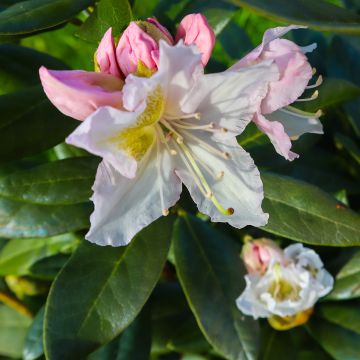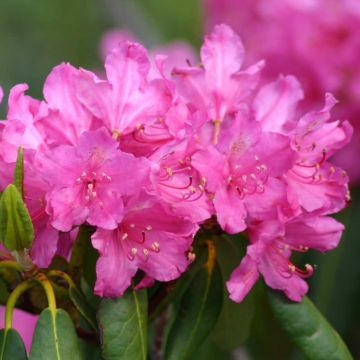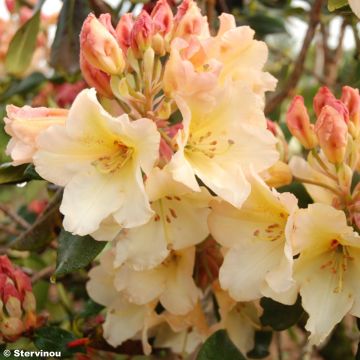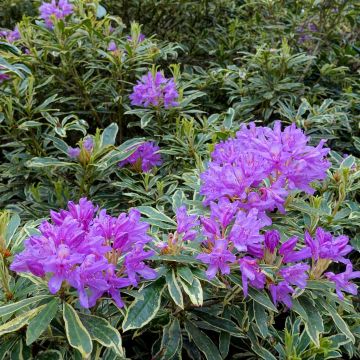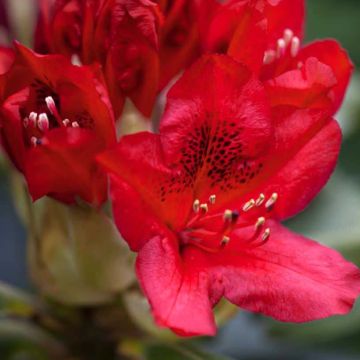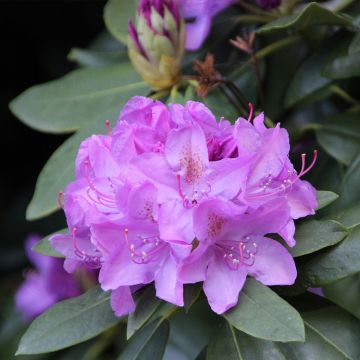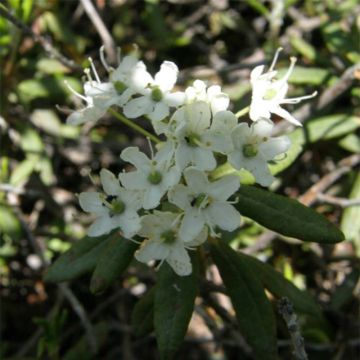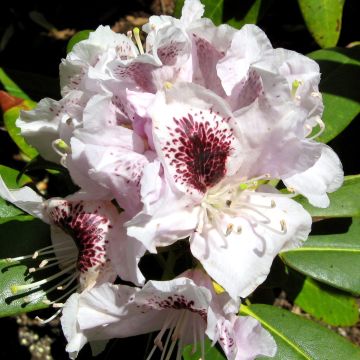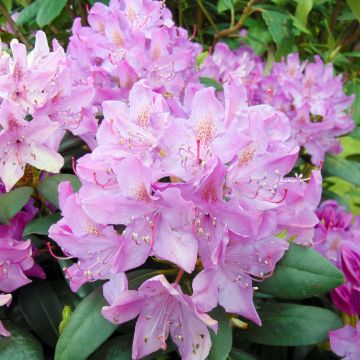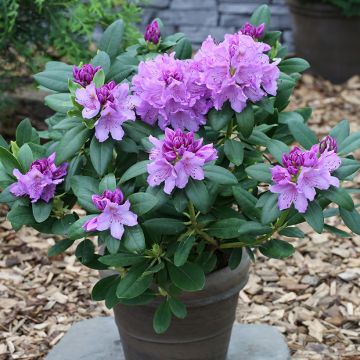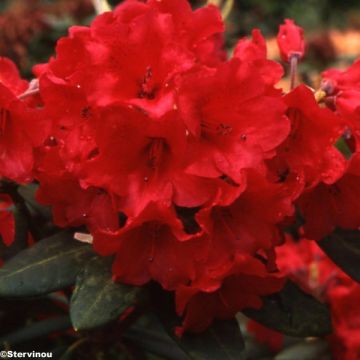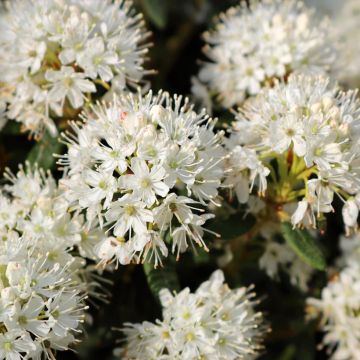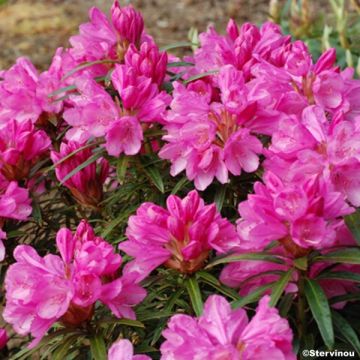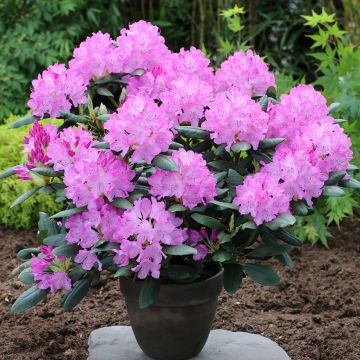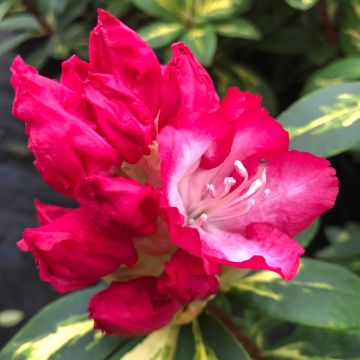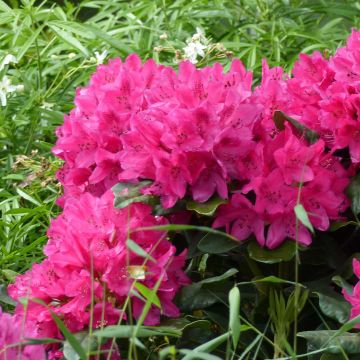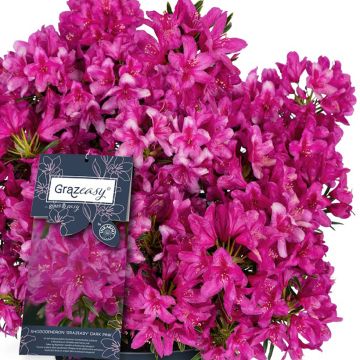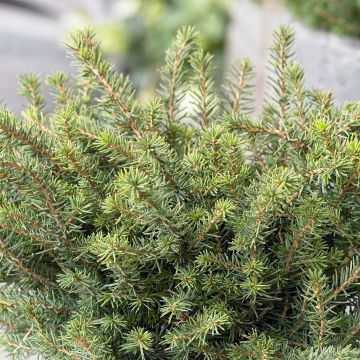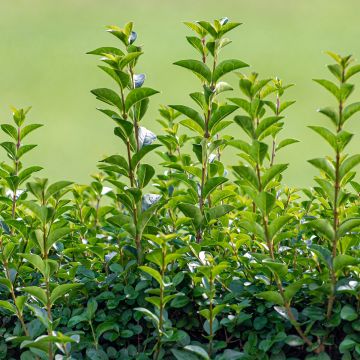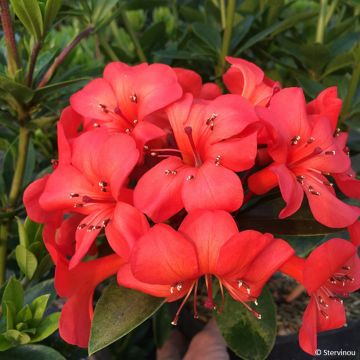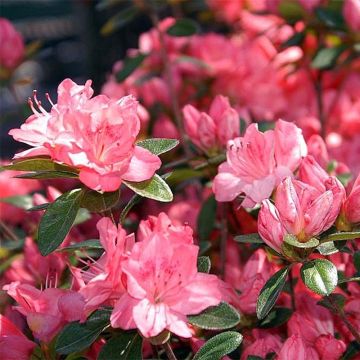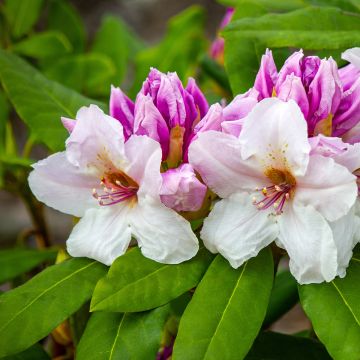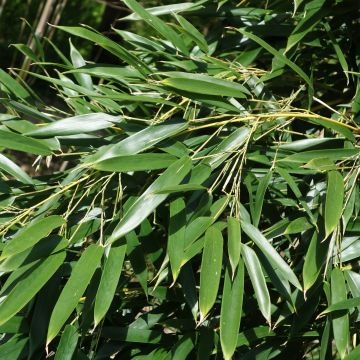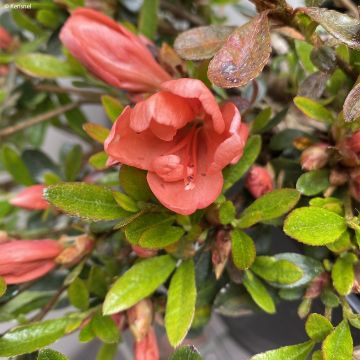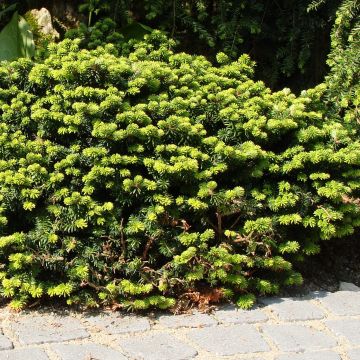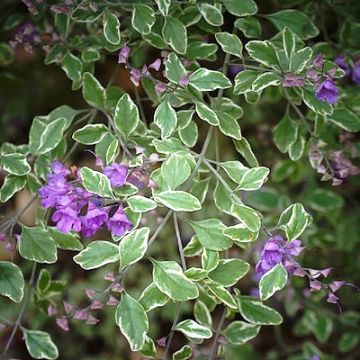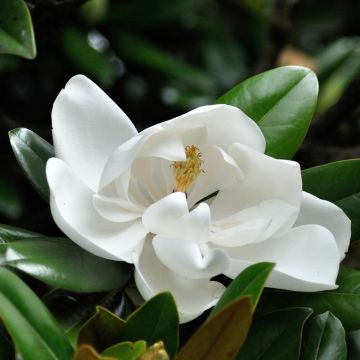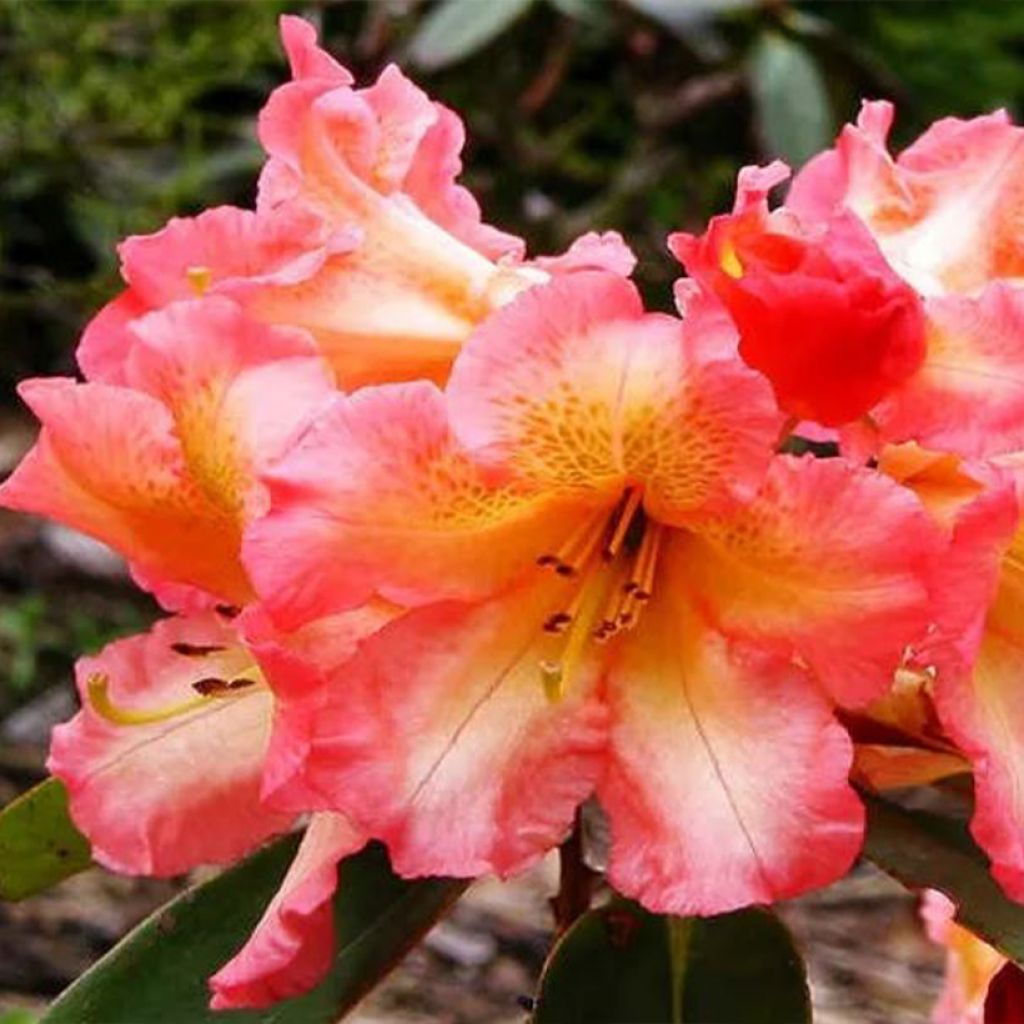

Rhododendron Sun Fire - Hybrid Rhododendron
Rhododendron Sun Fire - Hybrid Rhododendron
Rhododendron Sun Fire
Hybrid Rhododendron, Rhododendron
Why not try an alternative variety in stock?
View all →This plant carries a 24 months recovery warranty
More information
We guarantee the quality of our plants for a full growing cycle, and will replace at our expense any plant that fails to recover under normal climatic and planting conditions.
From €5.90 for pickup delivery and €6.90 for home delivery
Express home delivery from €8.90.
Does this plant fit my garden?
Set up your Plantfit profile →
Description
Rhododendron 'Sun Fire' is a compact variety that blooms in mid-May. Its flowers, initially red in bud, open up to a pinkish orange with a yellow centre and yellow stamens. The upper three lobes are speckled with golden brown. From a distance, the flowers appear in two shades of orange. The new leaves have a beautiful bronze tint.
Rhododendrons are plants from the ericaceae family, just like heathers, preferring mostly limestone-free soils, with an acidic tendency, and humid climates. Rhododendron 'Sun Fire' forms a dense bush, abundantly covered with beautiful lustrous, dark green foliage, bronze on young shoots. At 10 years old, it reaches 1.50 m in height and 1.25 m in width. It is a vigorous and easy plant, with beautiful growth. This ericaceous soil shrub will find its place in partial shade in moist, humus-bearing, and well-drained soil with an acidic pH. It does not tolerate excess water, so it requires a well-drained location. The plant is hardy to at least -21°C, and the flowers can withstand -15°C.
Starting from mid-May, the spectacular flowering of this 'Sun Fire' rhododendron is formed by clusters of large flowers. The interior of the flower is a soft yellow, and the outer edge is pink-orange. The upper three lobes have deeper golden spots. The slightly fringed edge of the petals adds extra relief.
Rhododendron 'Sun Fire' can be used as a specimen plant or in mass plantings, especially with other acidic soil plants. It can be paired with Chinese azaleas, which share the warm tones, magnolias, andromedas (Pieris), mountain laurels (Kalmia), Japanese maples with green or purple foliage.
Report an error about the product description
Plant habit
Flowering
Foliage
Botanical data
Rhododendron
Sun Fire
Ericaceae
Hybrid Rhododendron, Rhododendron
Cultivar or hybrid
Other Large Rhododendrons
Planting and care
Plant Rhododendron 'Sun Fire' in a partially shaded location, protected from cold and drying winds, in a moist, humus-bearing, light soil, with a tendency towards acidity. Like all plants that prefer acidic soil, it does not tolerate limestone soils or heavy soils that become waterlogged in winter. Dig a hole three times larger than the pot. Soak the root ball in non-limestone water and plant the bush at the level of the collar, in a mixture composed of 1/4 organic matter, leaf compost, gravel or pumice, and loam. Water thoroughly and keep the soil moist in summer. Azaleas and Rhododendrons have a shallow root system. As a result, they are sensitive to long periods of drought. Therefore, it is recommended to enrich the soil with humus and water abundantly during dry periods. In addition, this root system is not very strong, which is why it is essential to lighten heavy soils with draining materials (gravel, pumice, clay pellets) when planting. Apply a mulch of crushed pine bark around the base of the bush every spring to keep the soil moist while maintaining an acidic pH. Maintenance consists of removing faded flowers in summer and cleaning dead branches. Azaleas and Rhododendrons can sometimes be attacked by weevils that eat the edges of the leaves and rootlets, as well as the famous 'rhododendron beetle', which does not usually cause severe damage. Yellowing of the leaves (chlorosis) in Rhododendron indicates poor assimilation of iron in the soil and can lead to premature death of the plant. While limestone is often the cause, poorly drained soil or a deeply planted root ball can also explain the phenomenon.
Planting period
Intended location
Care
This item has not been reviewed yet - be the first to leave a review about it.
Evergreen shrubs
Haven't found what you were looking for?
Hardiness is the lowest winter temperature a plant can endure without suffering serious damage or even dying. However, hardiness is affected by location (a sheltered area, such as a patio), protection (winter cover) and soil type (hardiness is improved by well-drained soil).

Photo Sharing Terms & Conditions
In order to encourage gardeners to interact and share their experiences, Promesse de fleurs offers various media enabling content to be uploaded onto its Site - in particular via the ‘Photo sharing’ module.
The User agrees to refrain from:
- Posting any content that is illegal, prejudicial, insulting, racist, inciteful to hatred, revisionist, contrary to public decency, that infringes on privacy or on the privacy rights of third parties, in particular the publicity rights of persons and goods, intellectual property rights, or the right to privacy.
- Submitting content on behalf of a third party;
- Impersonate the identity of a third party and/or publish any personal information about a third party;
In general, the User undertakes to refrain from any unethical behaviour.
All Content (in particular text, comments, files, images, photos, videos, creative works, etc.), which may be subject to property or intellectual property rights, image or other private rights, shall remain the property of the User, subject to the limited rights granted by the terms of the licence granted by Promesse de fleurs as stated below. Users are at liberty to publish or not to publish such Content on the Site, notably via the ‘Photo Sharing’ facility, and accept that this Content shall be made public and freely accessible, notably on the Internet.
Users further acknowledge, undertake to have ,and guarantee that they hold all necessary rights and permissions to publish such material on the Site, in particular with regard to the legislation in force pertaining to any privacy, property, intellectual property, image, or contractual rights, or rights of any other nature. By publishing such Content on the Site, Users acknowledge accepting full liability as publishers of the Content within the meaning of the law, and grant Promesse de fleurs, free of charge, an inclusive, worldwide licence for the said Content for the entire duration of its publication, including all reproduction, representation, up/downloading, displaying, performing, transmission, and storage rights.
Users also grant permission for their name to be linked to the Content and accept that this link may not always be made available.
By engaging in posting material, Users consent to their Content becoming automatically accessible on the Internet, in particular on other sites and/or blogs and/or web pages of the Promesse de fleurs site, including in particular social pages and the Promesse de fleurs catalogue.
Users may secure the removal of entrusted content free of charge by issuing a simple request via our contact form.
The flowering period indicated on our website applies to countries and regions located in USDA zone 8 (France, the United Kingdom, Ireland, the Netherlands, etc.)
It will vary according to where you live:
- In zones 9 to 10 (Italy, Spain, Greece, etc.), flowering will occur about 2 to 4 weeks earlier.
- In zones 6 to 7 (Germany, Poland, Slovenia, and lower mountainous regions), flowering will be delayed by 2 to 3 weeks.
- In zone 5 (Central Europe, Scandinavia), blooming will be delayed by 3 to 5 weeks.
In temperate climates, pruning of spring-flowering shrubs (forsythia, spireas, etc.) should be done just after flowering.
Pruning of summer-flowering shrubs (Indian Lilac, Perovskia, etc.) can be done in winter or spring.
In cold regions as well as with frost-sensitive plants, avoid pruning too early when severe frosts may still occur.
The planting period indicated on our website applies to countries and regions located in USDA zone 8 (France, United Kingdom, Ireland, Netherlands).
It will vary according to where you live:
- In Mediterranean zones (Marseille, Madrid, Milan, etc.), autumn and winter are the best planting periods.
- In continental zones (Strasbourg, Munich, Vienna, etc.), delay planting by 2 to 3 weeks in spring and bring it forward by 2 to 4 weeks in autumn.
- In mountainous regions (the Alps, Pyrenees, Carpathians, etc.), it is best to plant in late spring (May-June) or late summer (August-September).
The harvesting period indicated on our website applies to countries and regions in USDA zone 8 (France, England, Ireland, the Netherlands).
In colder areas (Scandinavia, Poland, Austria...) fruit and vegetable harvests are likely to be delayed by 3-4 weeks.
In warmer areas (Italy, Spain, Greece, etc.), harvesting will probably take place earlier, depending on weather conditions.
The sowing periods indicated on our website apply to countries and regions within USDA Zone 8 (France, UK, Ireland, Netherlands).
In colder areas (Scandinavia, Poland, Austria...), delay any outdoor sowing by 3-4 weeks, or sow under glass.
In warmer climes (Italy, Spain, Greece, etc.), bring outdoor sowing forward by a few weeks.

































